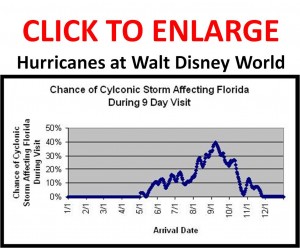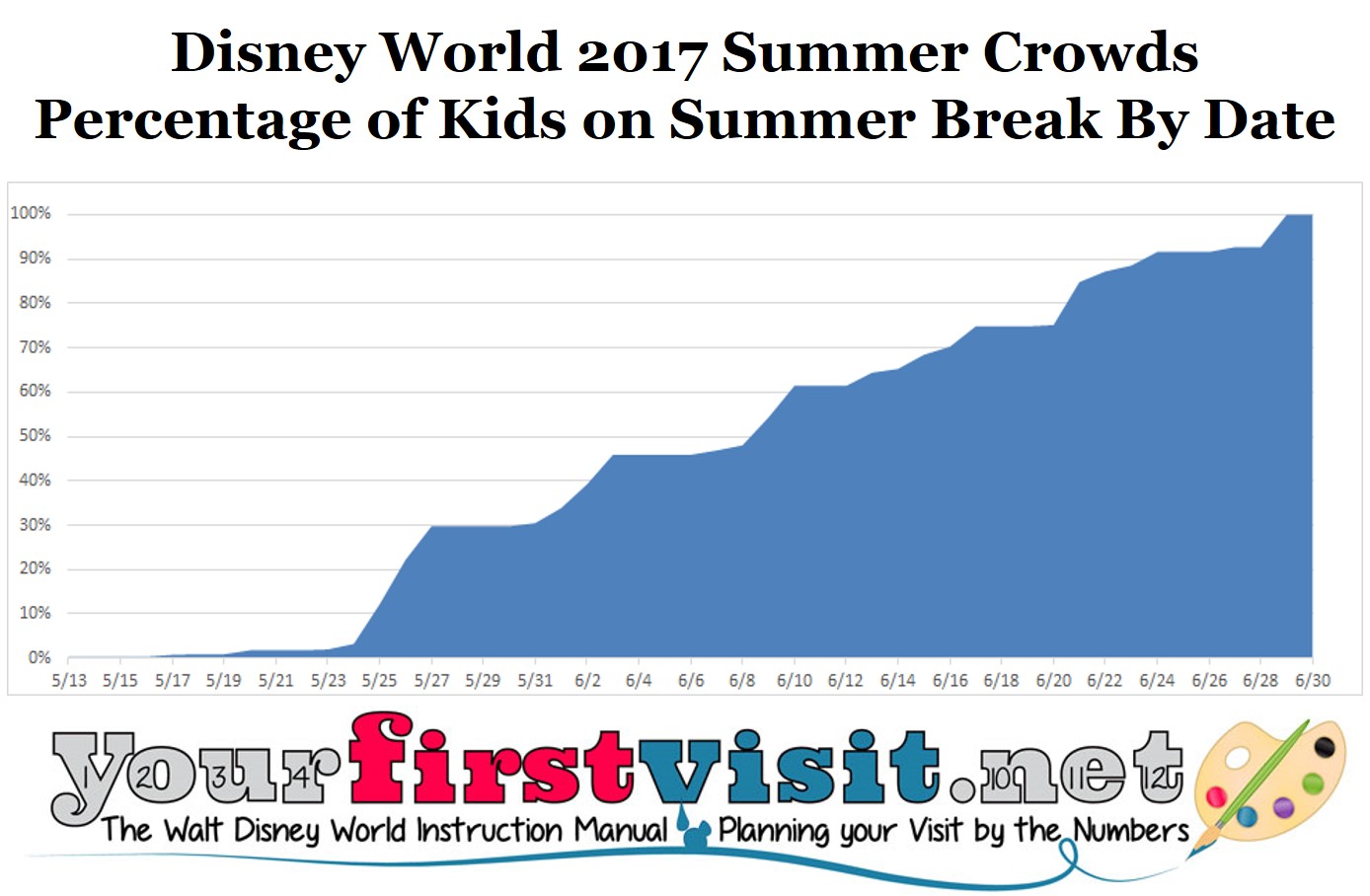Disney World Summer Crowds in 2017
By Dave Shute
DISNEY WORLD 2017 SUMMER CROWDS: THE PRINCIPLES
Walt Disney World summer crowds are governed by two factors:
- Public school summer break calendars, which have start and end dates more varied than you’d think
- The beginning of the peak of the hurricane season, in mid-August
Pretty much all kids are off all of July. As a result, July is the busiest summer month, and during it, the week that includes the 4th of July the busiest week.
Varied dates for when summer breaks begin means June can start well, and then build to high crowd levels.
August has the opposite pattern, beginning with high crowds, but, through the combination of a trickle turning to a flood of back-to-school dates, and savvy travelers avoiding the peak of the hurricane season, it ends quite un-crowded.
Families that can only visit in the summer (for example, school teachers) should go as early in June or as late in August as their schedules permit.
2017 PUBLIC SCHOOL SUMMER BREAKS AND THEIR EFFECTS ON WALT DISNEY WORLD CROWDS
The beginnings of summer breaks vary more than most people think.
The chart below illuminates this.
It’s based on data from a weighted sample that includes the school breaks of 15.4 million US schoolkids.
In 2017, 30% of kids are out by Memorial Day and more than half are out by June 9; the proportion builds over the rest of the month, with 75% out by June 19 and essentially all kids off by June 29, 2017.
Few families plan their vacation for their first day out of school, so there’s a lag in the effect of these dates on summer crowds that I can’t precisely quantify.
But the upshot is that in my 2017 Disney World crowd calendar I rate crowds the week beginning May 27, 2017 as 8/high-minus, June 3 as 7/moderate-plus, June 10 and 17 as 8/high-minus, and June 254 as 9/high.
The week beginning July 1, 2017 rates as 10/higher because of the draw of the 4th of July holiday, and the rest of July get 9/high.
THE PEAK OF THE HURRICANE SEASON AND DISNEY WORLD 2017 SUMMER CROWDS

It peaks, however, from mid-August to early October.
(Click the chart; see also Weather and When to Go to Walt Disney World.)
As a result, August crowds at Walt Disney World are affected not only by the end dates of summer breaks, but also by savvy travelers avoiding this potential weather.
Hurricanes rarely impact a Disney World vacation…but savvy travelers with choices in when they can go commonly avoid this period. (Disney knows this of course, and drops prices to change the value and risk equation.)
As a result, I rate crowds in my 2017 Disney World crowd calendar for the week beginning 7/29/2017 as 8/high-minus. The week beginning 8/5 gets a 7/moderate-plus rating, the week beginning 8/12 a 6/moderate rating, and the week beginning 8/19/2017 a 4/low-plus rating. Crowds will then stay in the low range through September.
Follow yourfirstvisit.net on Facebook or Google+ or Twitter or Pinterest!!






0 comments
Comment by typing in the form below.
Leave a Comment | Ask a Question | Note a Problem